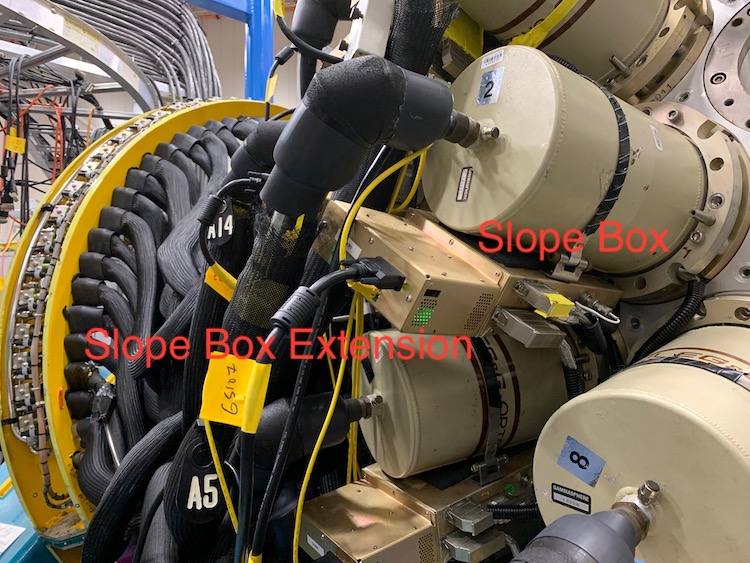Gammasphere Detectors: Difference between revisions
No edit summary |
No edit summary |
||
| Line 18: | Line 18: | ||
''Go back to [[Digital Gammasphere | ''Go back to [[Digital Gammasphere Upgrade Project]]'' | ||
Revision as of 14:13, October 5, 2021
This image is interactive. Click text to go to the link.
Gammasphere detectors
The detectors in Gammasphere are high purity germanium detectors sensitive to x- and gamma-rays from a few dozen keV to ~10MeV energy. All Gammasphere detectors are Compton shielded using bismuth germanate (BGO) shields. Six planar BGO detectors form a hexagonal shield array around the HPGe detector sides and a 7th BGO shield behind (at farther radius from the interaction point) is used as a "back plug". The germanium detector itself is of the coaxial type. Incident gamma-rays typically deposit charge in the germanium that is read out through the center contact.
Should the gamma-ray scatter within the Ge portion of the detector the scatter will normally be detected by interaction with the BGO shields. Thus we define a 'clean' event as one that excites the Ge but none of the surrounding BGO of a given detector and a 'dirty' event as one in which both the Ge and BGO light up. Within the digitizing data acquisition system, the sum of all 7 BGO signals is applied to one digitizer channel and the Ge center contact is digitized by another channel in the same digitizer. A discriminator threshold is applied to both signals and the Router trigger module looks at the time relationship between Ge discriminator bits and the associated BGO Sum discriminator bits. If the two discriminator bits are close enough in time the event is marked as 'dirty'.
Segmented Detectors
Many of the Ge detectors in Gammasphere are segmented. In these the Ge portion of the detector is split in half resulting in three Ge contacts (Center, Side A, Side B). Only one of the side connections is brought out to the digitizers as the charge that would be in the other side is given by subtraction of the measured side from the center contact.
Go back to Digital Gammasphere Upgrade Project

